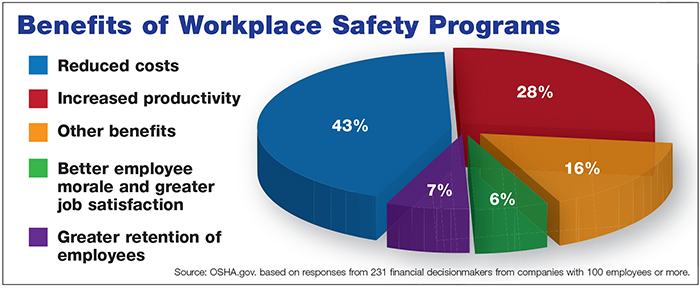2014 NWCDC
Roosevelt’s Vision in Action

“This is an outrage,” wrote Theodore Roosevelt to Congress in 1908, explaining the need for a system of workers’ compensation. “It is a matter of humiliation to the nation that there should not be on our statute books provision to meet and partially to atone for cruel misfortune when it comes upon a man through no fault of his own … .”
Fast forward a century or so, and Roosevelt would be amazed by what workers’ comp and risk management professionals are accomplishing every day. Employers of all stripes are thinking creatively and maximizing resources to preserve the safety and well-being of employees while simultaneously looking out for their organizations’ bottom lines.
Part of what drives that progress is the continual sharing of ideas and strategies that work. At their core, that is what the Teddy Awards are all about.
To help select this year’s Teddy Award honorees, we enlisted the help of Bryan Schwartz, corporate risk manager of American Infrastructure, a 2013 Teddy Award winner; Bruce Jones, director of insurance and Texas plan administrator at Community Health Systems Inc., a 2012 Teddy Award winner; 2014 Risk All Star Patricia Hostine, U.S. director of disability management at Flex-N-Gate; Mark Noonan, managing principal at Integro Insurance Brokers, and Roberto Ceniceros, senior editor of Risk & Insurance® and co-chair of the National Workers’ Compensation and Disability Conference® & Expo.
The Elements of a Winner
Any analysis of Teddy Award contenders starts with the numbers. Injury frequency, lost time and medical and indemnity cost data is carefully evaluated with an eye toward year-over-year performance improvement. Judges factor in fluctuations in staffing levels, varying hazard conditions and other issues which may influence outcomes.
But the numbers never tell the whole story. Judges look for programs that are not only successful today, but have the tools in place to remain successful for the long haul. Flexible, sustainable programs have the infrastructure in place that can adapt if the company grows, shrinks, merges with another company, launches new product lines or even alters its business model.
Teddy Award winners distinguish themselves by applying a holistic approach to risk that addresses the entire pre-injury through post-injury spectrum. Their programs contain elements addressing safety culture, injury prevention, training and wellness strategies while also managing medical costs, ensuring the best recovery outcomes, minimizing lost time, and getting injured associates back to work swiftly and safely.
Teddy Award winners also exemplify the “it takes a village” paradigm in their approach to collaboration, and have painstakingly forged teams — either internally or including third parties — with the risk expertise and skills to make their programs successful.
Focus on the Positive
Lost time is the enemy of both employers and injured workers. The longer an injured person remains out of work, the less likely it is that he or she will ever be able to return. That’s why the effectiveness of return-to-work programs is closely examined by the judging panel.
Effective return-to-work programs require the right mind-set. It is not enough to rely on a doctor’s restrictions stating what the person can’t do. Instead, employers must be looking at what an injured worker can do as well as what he or she can do with some type of accommodation. That opens up the field to creative thinking and helps employers find productive work that benefits the organization while keeping injured employees engaged, active, and motivated to heal.
Sprinkled among the application narratives was something else Teddy Roosevelt would have been heartened to see. Successful employers are building health, safety and workers’ comp programs with a genuine goal of caring for their people. This truth was not lost on this year’s judges. If you focus on what’s best for employees, judges said during the judging process, cost savings will follow.
If that is the trend that guides the next century of workers’ comp professionals, Roosevelt’s legacy will be far greater than he ever dared to dream.
_______________________________________________________
Read more about all of the 2014 Teddy Award winners:
 Building Value with Trust: Honda of South Carolina boosted its involvement with injured worker cases, making a positive first impression on employees and health care providers.
Building Value with Trust: Honda of South Carolina boosted its involvement with injured worker cases, making a positive first impression on employees and health care providers.
 The TLC Behind the Roar: A proactive and holistic approach to employees’ well-being has resulted in huge reductions in work-related injury claims for Harley-Davidson.
The TLC Behind the Roar: A proactive and holistic approach to employees’ well-being has resulted in huge reductions in work-related injury claims for Harley-Davidson.
 Quick to Act: Compass Group is lauded for its safety initiatives and for a return-to-work program that incorporates all of its business lines.
Quick to Act: Compass Group is lauded for its safety initiatives and for a return-to-work program that incorporates all of its business lines.
 Healing the Healers: Teddy Award winner Cold Spring Hills Center for Nursing and Rehabilitation proved that even small organizations can make a huge difference in their employees’ lives.
Healing the Healers: Teddy Award winner Cold Spring Hills Center for Nursing and Rehabilitation proved that even small organizations can make a huge difference in their employees’ lives.












